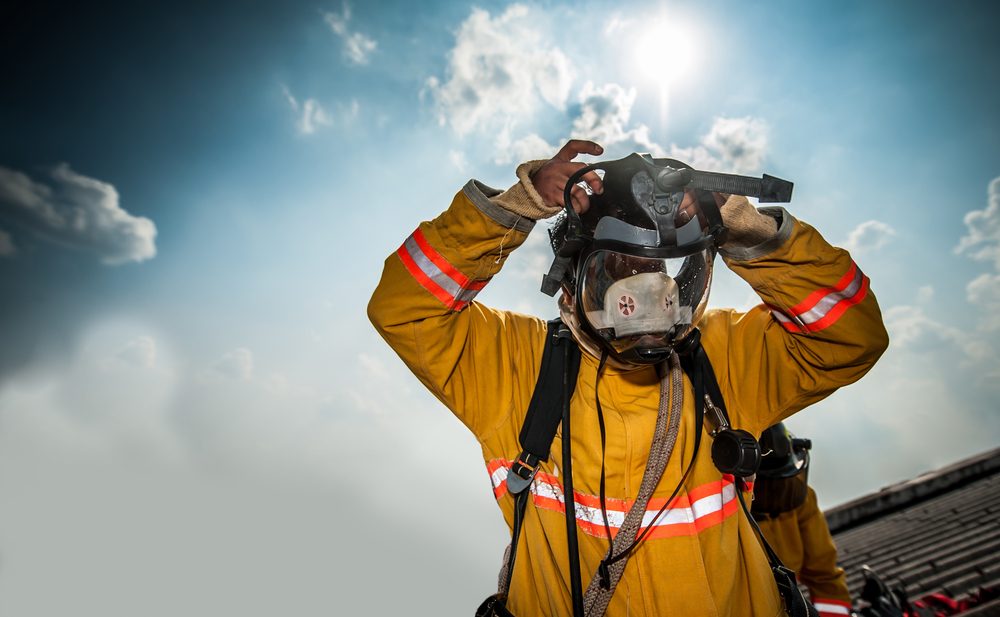- January 18, 2024
- by Harshita Bajaj
- Mental Health, PTSD, Rescue Workers
A rescue worker involves individuals who represent various helping professionals in situations of emergencies, accidents, disasters or hazardous situations where people, their lives, and/or their well-being may be at risk. Rescue workers are tasked with providing immediate assistance and support to individuals in distress, including first aid and medical care, disaster response and evacuation. Their purpose is to extract individuals at risk from the challenging or hazardous conditions, ensure their well-being is not at risk and minimize the impact of disaster while extracting them.
Who Are Rescue Workers?
The roles of a ‘rescue worker’, ‘first responder’ ‘emergency response provider’ can be overlapping and used interchangeably, however, it is agreed that they are categorized as helping professionals. Luster (2022) states that this umbrella term includes “police officers, firefighters, and emergency medical technicians (EMTs), and also federal, state, and local governmental and nongovernmental emergency public safety, fire, law enforcement, emergency response, emergency medical (including hospital emergency facilities), and related personnel, agencies, and authorities”. Keeping in mind recent developments and events, a first responder has a broader description, including mental health and substance-abuse responders (Naturale, 2015).
Rescue Workers As Secondary Victims
A rescue worker is considered a secondary victim of the disaster or traumatic events, which is an inference supported by research (Lee et al., 2020; Yasienet al., 2016). Due to the highly risky nature of this job and the high frequency of exposure to traumatic experiences and life-threatening situations, rescue workers are often at risk to develop psychological symptoms and are subject to many mental health challenges on a daily basis.
Rescue Worker Mental Health
Rescue workers mental health takes a serious toll due the stressful situations they work in. They have been found to experience psychological distress, fatigue and burnout, post-traumatic stress disorder, depression and anxiety, physical illness and somatic complaints, suicidal behaviors such as suicidal thoughts and actualized attempts, hopeless and social withdrawal. Further, according to CDC and SAMHSA, first responders are at an increased risk of suicidal behaviors such as suicidal ideation and actualized attempts and substance abuse and dependence (Substance Abuse and Mental Health Service Administration, 2018). These are some of the daily challenges and symptoms rescue workers and/ or first responders are at a high risk of developing.
Psychological Effects of Disasters on First Responders
Below given are some psychological effects of disasters on first responders or rescue teams, categorized into positive and negative impacts:
- Depression and Anxiety
- Trauma and Post-Traumatic Stress Disorder (PTSD)
- Acute Stress Disorder
- Substance Abuse
- Suicidal ideation and attempts
- Burnout and Fatigue
- Secondary Trauma or Vicarious Trauma
- Irritability and Hostility towards close ones
- Survivor’s Guilt
- Emotional Numbness and Isolation
Further, research has suggested that about half of the people who work in the traumatic stress field have a history of exposure to traumatic events. For some of these individuals, this can be a risk factor, particularly when events that responders have to deal with are similar to their own experiences. Moreover, due to being away from close and loved ones, it is harder for responders to process emotionally or be resilient as they are without their usual support systems. As a result of being a part of rescue teams, many rescue workers and first responders feel the need for emotional counseling and psychological support.
Trauma and Stress in Rescue Workers
Below is a more detailed account of mental health statistics among first responders, rescue workers and emergency personnel.
- Emotional Impact of Disasters on Rescue Teams- According to SAMHSA, in association with firefighters, police officers, and EMS professionals, “It is estimated that 30 percent of first responders develop behavioral health conditions including, but not limited to, depression and PTSD, as compared with 20% in the general population. In a study about suicidality, firefighters were reported to have higher attempt and ideation rates than the general population. In law enforcement, the estimates suggest between 125 and 300 police officers commit suicide every year.” Further, “over 50% of firefighter deaths are due to stress and extreme exhaustion.”(SAMHSA, 2018; Stanley et al., 2016).
- “The lifetime prevalence of suicidal ideation among police officers was revealed to be 25% in female officers and 23% for male officers. Suicide attempt rates among police officers ranged from 0.7% to 55% in studies based on extensive literature reviews” (Tiesmen et al., 2021).
- Post-Traumatic Stress in First Responders- According to one study, PTSD is present in approximately:
15% of emergency personnel (paramedics)
13% of rescue teams
7% of firefighters
5% of police officers
Crisis Intervention for Rescue Workers
In light of the mental health statistics and impact of disasters and emergencies, SAMHSA has developed Warning Signs of Excessive Stress that should be used as a guide and sign for professional intervention, which include:
- Bodily sensations and physical effects (Palpitations, rapid heart rate, tremors and headaches, nausea, difficulty in falling asleep, nightmares, etc.)
- Strong negative feelings (Fear or perceived danger, frustration and anger, irritability, emotional imbalance)
- Difficulty thinking clearly (Disorientation, confusion, unable to follow instructions or carry out problem solving, decision making, misinterpretation of events)
- Problematic or risky behaviors (Unnecessary risk-taking and endangerment of self and team members, non-compliance of orders, increased use of drugs or alcohol)
- Social conflicts (Blaming and conflict with peers or family, withdrawal and isolation, anger and hostility).
It is important to remember the resources available for individuals in such situations such as, support groups, psychological counseling and treatment, psychiatric treatment, stress management and crisis management techniques, management of workload, a balanced lifestyle with time off, and developing healthy coping strategies.
Mental Wellness for Emergency Personnel
Below are some strategies that are given by organizations and governments specifically designed for firs responders, rescue teams, and emergency personnel:
- Effective Training and Preparedness: Ensuring adequate training in all aspects as well as awareness regarding the stress and situations they may walk into for all responders. Further, being aware of personal vulnerabilities and stress and taking time for self-care, adequate sleep and nutrition, time-off and psychological counseling as and when required can be protective measures for responders.
- Individual Crisis Counseling: Trained mental health professionals are available with rescue organizations for responders and rescue workers who require one-on-one support for specific concerns.
- Trauma-Informed Counseling Strategies: Trained counselors who are effectively trained in being able to connect to job-specific stress and tragedies that they go through on a daily basis.
- Resilience Training: Providing resilience building training during preparation before and after critical incidents to develop coping skills and emotional strength.
- “Buddy” Program or Peer-Support Programs: Often, workers are paired up in a buddy system to support each other and mentor each other’s stress reactions within a rescue team.
- Critical Incident Stress Debriefing (CISD): This is a structured and formal group discussion that takes places after a critical incident wherein trained facilitators guide participants in sharing their experiences, support in order to destress, provide emotional support and also identify coping strategies.
- Critical Incident Stress Management for Rescuers: CISM is a broader framework that includes multiple interventions highlighting early intervention as key and ongoing support to address immediate and long-term effects of emergency incidents. It works towards achieving the goal of mitigating negative effects of stress and trauma, promoting resilience and facilitating the recovery process. This includes pre-incident training and briefings, CISD, individual counseling with follow-up sessions, peer support programs, education on normal stress reactions and warning signs, resilience building activities, and crisis response planning.
- Education and Awareness Programs: This involves mental health awareness and coping training programs to encourage rescue workers and emergency personnel to seek help and reduce stigma around it.
- Ongoing Mental Health Support and Regular Check-Ins: Ensuring regular access to mental health resources and support along with establishing a system for regular check-ins to monitor the well-being of rescue workers.
It is important to tailor crisis interventions to the specific needs of rescue workers and the nature of incidents they are involved in. According to McGarry et al., ( 2013) high levels of resilience were inversely associated with anxiety, depression and stress and further, it would protect them from compassion fatigue and burnout, as per Pietrantoni&Prati (2008). Rescue workers who had high levels of spiritual and religious beliefs would experience lower psychological distress (Yasienet al., 2016).
To improve the health and well-being of rescue workers it is important to undertake a cooperative effort and establish a working environment that not only provides adequate training but also encourages and emphasises on the development of resilience and psychological strength and health among rescue workers and first responders, along with supporting them in seeking help when needed.
At North American Behavioral Health Services, we understand the hardships faced by rescue workers and are here to support them through this tough phase.
From skilled mental health professionals to providing continued work on strategies, NABHS is the right place to be in! Reach out today!
















